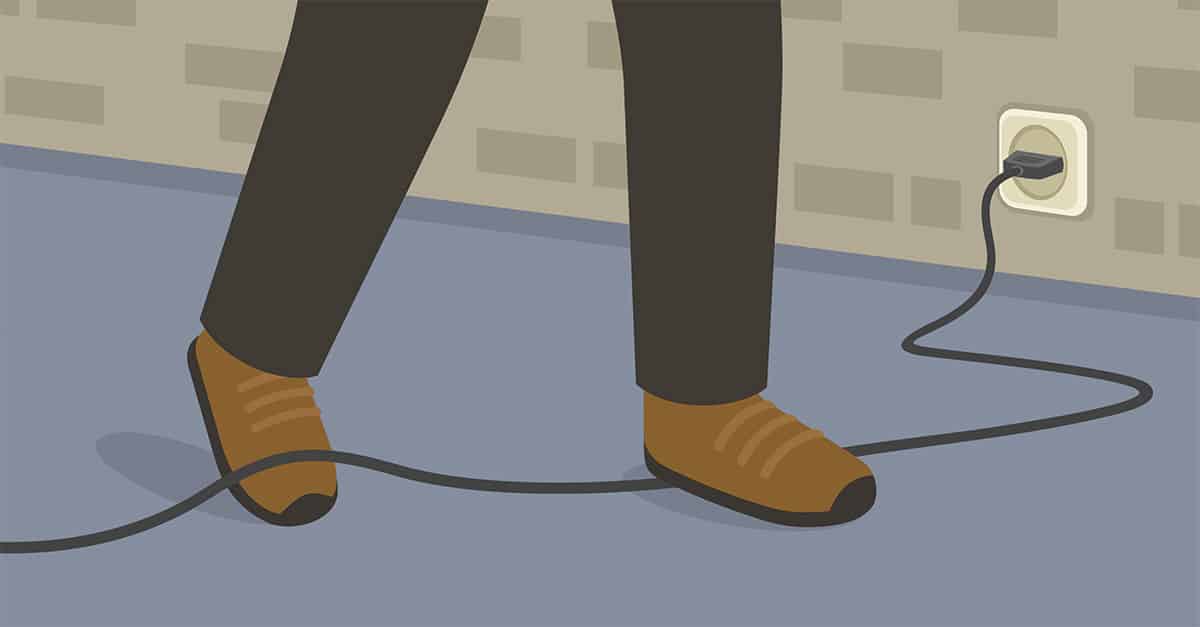Many workplace slips, trips, and falls are preventable by implementing a number of workplace design modification measures and training.
Workplace Environmental Condition Modifications
Worksite environmental conditions can be modified or improved to reduce or eliminate hazards that lead to slips, trips, and falls. Specific elements of your worksite design that can be improved to prevent slips, trips, and falls include:
Aisles and Passageways
Your company should keep all workspace aisles and passageways clear, in good repair and free of obstruction that could create a hazard. Aisles and passageways should be permanently marked.
Work Surfaces
Your company can mark or highlight areas with raised edges, step edges or transition areas, and can use anti-skid paint and slip-resistant coatings on these surfaces to avoid slips, trips and falls.
Ventilation Systems
Your company should ensure that there is adequate workplace ventilation to avoid smoke, steam and condensation of water and grease onto the floor.
Lighting
- Install light fixtures that emit light from all sides and install more light fixtures in poorly lit areas.
- Verify that light bulbs have an appropriate brightness.
Floors
Your company can install slip-resistant flooring material in areas where employees are at high-risk of slipping or tripping. To reduce the risk of injury caused by floor surfaces, you can:
- Encourage workers to cover, clean or report spills promptly.
- Make sure there is easy access to spill pads, paper towel holders and pop-up-tent wet floor signs.
- Make sure employees wear footwear that is appropriate for the floor surface on which they are working.
- Keep floors free of protruding nails and boards.
- Use mats to provide slip-resistant walking surfaces.
- Mats should be sufficiently large so that several footsteps fall on the mat, cleaning contaminants off shoes, before shoes contact flooring. Use beveled edge, flat and continuous mats.
- Replace mats that are curled, ripped, or worn and secure mats from moving.
- Paint small markers on the floor to remind staff to lay mats in the correct position every day. Remove tripping hazards such as cords and hoses.
- Replace smooth flooring materials in areas normally exposed to water, grease and/or particulate matter with rougher-surfaced flooring when replacing flooring.
Stairs
Your company should keep all stairwells sufficiently lit and equip fixed stairs with slip-resistant treads. The following measures can also be taken to ensure stair safety:
- Consider adding a handrail at building entrances or other areas with less than four steps.
- For open stairwells, check that a two-handrail system is present, and protect the open area under the top rail to the stairway steps by installing a fixed barrier.
Drainage System
The workplace drainage system should be kept in good repair to prevent spilling or backing up of water onto the floor. To ensure proper drainage:
- Check that pipes are correctly aligned with the drain that they are emptying into.
- Unclog drains regularly, particularly in kitchen areas.
- Redirect downspouts away from sidewalks with high-pedestrian traffic.
Download the Focus on Safety: Slips, Trips & Falls Prevention Tips.pdf

